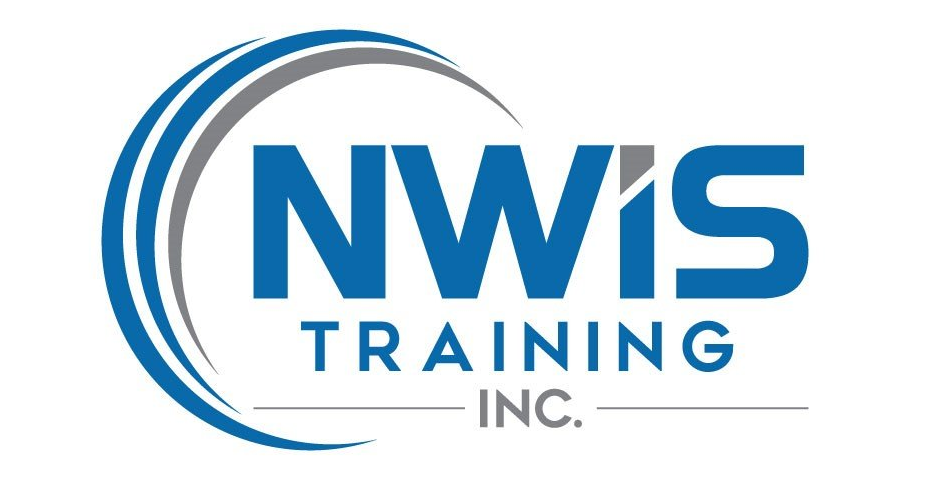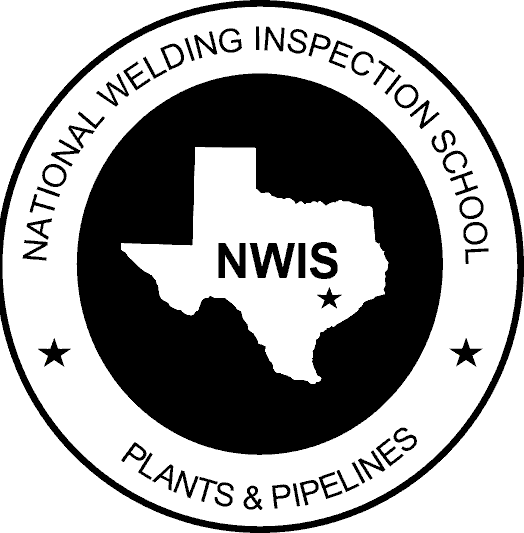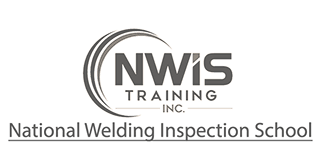Transmission And Distribution "Hands On Visual Test" (CPWI+V)
A welding inspection course for Pipeline Construction and In-Service welding leading to a Pipeline Welding Inspector’s certificate, (CPWI+V).
Welding Inspection for Transmission and Distribution Pipelines "Hands-On" (CPWI+V)™ originated by Mr. John Wormeli who had over 40 years of welding engineering and non-destructive testing experience on pipelines, pressure vessels and piping systems. John graduated from LeTourneau, Longview, Texas, with a Bachelor of Science degree in Welding Engineering. He worked for ACF Industries for 5 years and Atlantic Richfield for 13 years, prior to forming the National Welding Inspection School and his consulting business.
This course is now taught by Bryan Lancon who has extensive experience in many aspects of Welding Inspection and NDT Services. Mr. Lancon’s background includes over 20 years as a practicing NDT technician with experience in aviation, manufacturing, petro-chemical and fabrication. Mr. Lancon holds American Society for Nondestructive Testing (ASNT) certification as a Professional Level III, and is certified as an ASNT Level III in radiography, ultrasonics, eddy-current, magnetic particle, and penetrant. In addition to the ASNT certification Mr. Lancon holds certification as an American Welding Society (AWS) Certified Welding Inspector (CWI).Bryan is now sharing his considerable knowledge and experience by conducting this CPWI+V program.
This program presents the codes and standards used in the construction of pipelines and distribution systems in the oil and gas industry. Successful completion of this seminar leads to a Certificate for Pipeline Welding Inspection (CPWI+V) from the National Welding Inspection School. Successful completion includes a passing score of 75% or greater examination. A calculator will be required for this program.
NO video or audio recording devices are allowed during our "Hands-On" CPWI+V™ course without the expressed written consent of NWIS. Thank you for your cooperation.
Course Curriculum
The applicable editions of the following codes and standards presented in the program are listed:
API 1104, Welding of Pipelines and Related Facilities
Appendix B, API 1104, In-Service Welding
ASME B31.4, Liquid Transportation Systems for Hydrocarbons
ASME B31.8, Gas Transmission and Distribution Systems
API 5L, Specification for Line Pipe
DOT Part 192, Transportation of Natural and Other Gas by Pipeline
DOT Part 195, Transportation of Hazardous Liquids by Pipeline
Specifications for Electrodes and Filler Metals
Additional topics presented in this program include:
Preparation of Welding Procedures
Welder Qualification
Visual Welding Inspection
Pipe Inspection
Weld Joint Designs
Preheat Considerations
Electrode Selection
Weld Passes and effect on Properties
Removal of Arc Burns
Weld Repair Techniques
Weld Toughness (CVN Testing)
Weld and Heat-Affected Zone Hardness
Formulas for Welding Inspection
Weld Defects and Causes
Effect of Magnetism on Weld Quality
Measurement of Welding Parameters
The applicable editions of the following codes and standards presented in the program are listed:
API 1104, Welding of Pipelines and Related Facilities
Appendix B, API 1104, In-Service Welding
ASME B31.4, Liquid Transportation Systems for Hydrocarbons
ASME B31.8, Gas Transmission and Distribution Systems
API 5L, Specification for Line Pipe
DOT Part 192, Transportation of Natural and Other Gas by Pipeline
DOT Part 195, Transportation of Hazardous Liquids by Pipeline
Specifications for Electrodes and Filler Metals
Additional topics presented in this program include:
Preparation of Welding Procedures
Welder Qualification
Visual Welding Inspection
Pipe Inspection
Weld Joint Designs
Preheat Considerations
Electrode Selection
Weld Passes and effect on Properties
Removal of Arc Burns
Weld Repair Techniques
Weld Toughness (CVN Testing)
Weld and Heat-Affected Zone Hardness
Formulas for Welding Inspection
Weld Defects and Causes
Effect of Magnetism on Weld Quality
Measurement of Welding Parameters
FIRST DAY
The first day begins with an introduction and scope of the 4 ½ day program. Definitions of pipeline terminology and mechanical testing activities are presented. A detailed presentation of API 1104 including welding procedure development, welder qualification, visual inspection criteria and related topics are covered this first full day. Welding electrode selection and the electrode classification are presented to provide the attendees with the reasons for selecting the electrodes and/or filler metals for the procedure which will assure the deposited weld metal strength meets or exceeds the strength requirements of the pipe material. Other properties such as impact strength (CVN testing) and the very important hardness values of the weld and HAZ are discussed for both new construction and In-Service welds.
SECOND DAY
The second day continues with detailed presentations of API 1104. In-Service Welding is presented in depth to assure all attendees are aware of the need for safe and proper procedures when welding on loaded, pressurized pipelines. The details of Appendix B, API 1104, including the proper method for welding procedure development and welder qualification are discussed.
Also covered on the second day are DOT Part 192 and Part 195 and an overview of “Inspection of Pipe” using API 5L as the foundation for the acceptance criteria. Inspection items which will be covered for the welding inspector are the dimensional tolerances and the inspection tools used to determine compliance to the pipe manufacturing tolerances.
THIRD DAY
The third day begins with Elements of Inspection. This section covers the topics listed below:
1) Welding Processes
2) Pipe Condition
3) Joint Design
4) Preheat
5) Electrodes
6) Weld Passes
7) Arc Burns
8) Weld Repairs
9) Weld Toughness
10) Weld Hardness
11) Magnetism
12) Welding Parameters
The afternoon of the third day will be an all "Hands-On" learning experience in the shop. Everything learned and discussed in the classroom in the previous days will be demonstrated in the shop. The class will be divided into 4 groups and will rotate through 4 learning stations covering the following items:
Station 1
1) A demonstration using Digital Calipers will be done to determine the Cross -Sectional Area of a tensile specimen and a Tensile Strength Formula will be calculated to determine the specimen’s Minimum Tensile Strength.
2) Tensile Test, Nick Break, Face & Root Bend tests are performed.
3) A Gauss Meter will be used to measure for Magnetism of a pipe and the proper use of a UT Meter will be demonstrated to properly measure wall loss and Minimum Wall Thickness.
Station 2
1) In this group, you will visually inspect several different weld indications as a group. Each Indication will be measured, and API 1104 code applied to see if the indication is within the acceptable parameters. Some indications that will be reviewed are:
Porosity, IP (Incomplete Penetration), IPD (Incomplete Penetration due to Hi Lo), Burn-Through, Crater Crack, Cluster Porosity, IF (Incomplete Fusion), External Concavity, Internal Concavity, & Arc Burn.
2) The proper use of the following tools will be demonstrated to measure the indications:
Digital Calipers, NWIS Bevel Tool, Protractors, Hi Lo Gauge, Gap Gauge, V-Wac Gauge (Pit Gauge)
Station 3
1) Demonstrations of the proper fit up and alignment of pipe using the Gap Gauge and Hi Lo Gauge.
2) Measuring the Precise Diameter of a Pipe using a Pi Tape
3) Dent Measurements and Miter Measurements are performed, and acceptance criteria is evaluated.
4) Demonstrate checking Bevel and Land in accordance with API 5L requirements.
Station 4
1) Calculation of Cross-Sectional Area of a specimen
2) Calculation of Ultimate Tensile Strength
3) Calculating Travel Speed and Heat Input
4) Determining Allowable Wall Loss and Minimum Wall Thickness
FOURTH DAY
The morning of the fourth day, students will observe demonstrations of properly measuring amps, volts , travel speed and heat input calculation. A brief presentation on Radiography and Film Interpretation will be given in the afternoon.
FIFTH DAY
The "CPWI+V" open-book test will be administered in the classroom beginning at 7:00 am – 1:00 pm. The examination will be in 2 parts and cover the topics discussed during the first three days of lecture (i.e. codes, standards and additional topics listed in the curriculum) as well as the hands on visual portion discussed on the 3rd & 4th day of course. Upon completion and passing both parts with a composite score of 75%, a certificate, laminated card and letter of attendance with a unique registration number will be issued. You will be notified by mail in 7-10 days of your results.
The test time will be 6 hours. A composite score of 75% is required for passing. 60% of the student’s test score will be from the written portion of the test and 40% of the test score will be from the hands on visual portion of the test. If one scores below 75%, he/she will have the option to retake the test within 90 days for a fee of $500. After the second attempt with an unsatisfactory score, you will be required to retake the course.
Must be 18 years old and have industry knowledge


